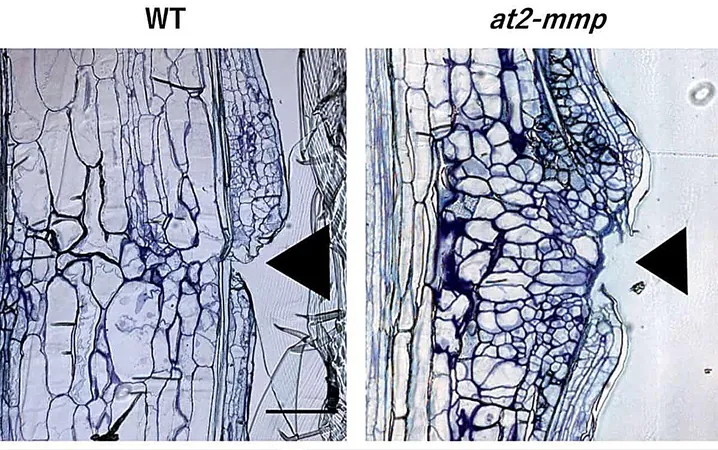
The Asteroid Hunters: Advanced Technologies Poised to Shield Earth from Cosmic Catastrophes
2024-09-29
Introduction
On September 4, an asteroid was detected hurtling towards Earth, on a collision course set to impact within a mere 10 hours. The island of Luzon in the Philippines braced itself, but fortunately, the situation turned out to be a harmless event. The asteroid, measuring just one meter, ignited upon entering the atmosphere, creating a stunning blue-green trail visible across the sky. Such minor asteroids frequently enter Earth's atmosphere without consequence. However, the potential for significant harm escalates dramatically with larger asteroids—those measuring 20 meters can shatter windows and topple people, while 50-meter rocks could devastate towns, and a 140-meter asteroid could obliterate major cities upon impact.
Emerging Science of Planetary Defense
For eons, Earth has faced these celestial threats with little knowledge or preparation. Today, a specialized field of science known as planetary defense has emerged, involving dedicated scientists and engineers striving to mitigate the risks posed by these astronomical giants. They employ cutting-edge technology to scan the night sky diligently, pinpointing asteroids that could be on a collision course with Earth. Over the next few years, the introduction of two advanced telescopes is expected to bolster our defense efforts significantly, offering a formidable shield for the planet's 8 billion inhabitants.
Planetary Defense Strategies
Planetary defense strategies can be divided into two key approaches: offensive measures designed to deflect or destroy threatening asteroids, and comprehensive monitoring to detect them. NASA's groundbreaking Double Asteroid Redirection Test (DART) in 2022 marked a historic attempt to test our capability to alter the trajectory of a dangerous asteroid by intentionally crashing a spacecraft into it. The success of this mission showcased that we could potentially protect Earth from a catastrophic collision if we are forewarned.
The Importance of Detection
However, a critical caveat remains—the ability to detect asteroids in the first place. This necessity has led to a collaboration between space agencies and astronomers who are actively tracking near-Earth asteroids. Currently, optical astronomy is the primary method employed to identify these cosmic threats. Telescopes look for sunlight reflecting off these objects, but many are still undiscovered. Although NASA has identified a significant number of asteroids over a kilometer in length—those capable of cataclysmic damage—estimates suggest that nearly half of the 140-meter-sized asteroids remain unseen, and thousands of smaller yet equally hazardous 50-meter asteroids are lurking nearby.
Upcoming Technologies in Detection
To enhance our detection capabilities, NASA is embarking on the Near-Earth Object Surveyor (NEO Surveyor) mission. This highly specialized telescope, scheduled for launch within the next five years, will uniquely utilize thermal infrared technology to spot city-killer asteroids. Unlike traditional telescopes, NEO Surveyor will effectively see through sunlight's glare, identifying previously hidden asteroids by sensing the heat they emit. Its advanced design aims to locate over 90% of yet-to-be-discovered dangerous objects within a decade of deployment.
Simultaneously, the Vera C. Rubin Observatory, currently under construction in Chile, will complement NEO Surveyor's observations. Although dependent on reflected light, Rubin features unprecedented technology that improves its ability to detect asteroids from deep space, boasting a massive mirror and a powerful 3,200-megapixel camera. Anticipated to double the number of known asteroids in its first six months of operation (beginning in 2025), this facility will play a crucial role in cataloging objects in our celestial vicinity.
Challenges and Future Prospects
While challenges such as adverse weather and the increasing presence of artificial satellites may hinder ground-based observatories, the combination of NEO Surveyor and the Rubin Observatory promises a revolutionary enhancement in our planetary defense arsenal. By the 2040s, we could have early warning systems in place capable of alerting humanity to potential asteroid threats long before they reach a dangerous proximity.
Proactive Measures Against Asteroids
Should scientists discover an impending impact, proactive measures could be taken to avert disaster. This may involve launching missions that utilize techniques similar to the DART experiment or even employing nuclear options to neutralize the threat. Conversely, if assessments confirm that no immediate risks exist, the global community can take a breath of relief.
Conclusion
Throughout history, humanity has been a bystander in the face of celestial events, but with advancements in planetary defense, we are becoming active participants in safeguarding our planet. As we navigate a world filled with pressing issues—climate change, conflict, and social unrest—the knowledge that we can now protect ourselves from cosmic threats gives hope for a brighter future. As long as we continue to innovate and invest in planetary defense, we can protect our precious home from dangers beyond the stars.




 Brasil (PT)
Brasil (PT)
 Canada (EN)
Canada (EN)
 Chile (ES)
Chile (ES)
 España (ES)
España (ES)
 France (FR)
France (FR)
 Hong Kong (EN)
Hong Kong (EN)
 Italia (IT)
Italia (IT)
 日本 (JA)
日本 (JA)
 Magyarország (HU)
Magyarország (HU)
 Norge (NO)
Norge (NO)
 Polska (PL)
Polska (PL)
 Schweiz (DE)
Schweiz (DE)
 Singapore (EN)
Singapore (EN)
 Sverige (SV)
Sverige (SV)
 Suomi (FI)
Suomi (FI)
 Türkiye (TR)
Türkiye (TR)